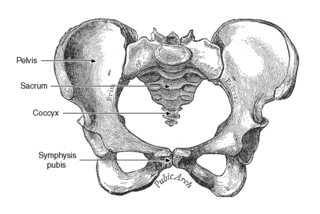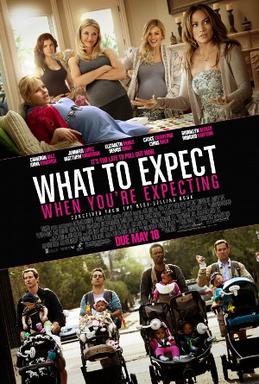
Childbirth, also known as labour, parturition and delivery, is the completion of pregnancy where one or more babies exits the internal environment of the mother via vaginal delivery or caesarean section. In 2019, there were about 140.11 million human births globally. In the developed countries, most deliveries occur in hospitals, while in the developing countries most are home births.

Postpartum depression (PPD), also called postnatal depression, is a type of mood disorder experienced after childbirth, which can affect both sexes. Symptoms may include extreme sadness, low energy, anxiety, crying episodes, irritability, and changes in sleeping or eating patterns. PPD can also negatively affect the newborn child.

The postpartum period begins after childbirth and is typically considered to last for six weeks. However, there are three distinct but continuous phases of the postnatal period; the acute phase, lasting for six to twelve hours after birth; the subacute phase, lasting six weeks; and the delayed phase, lasting up to six months. During the delayed phase, some changes to the genitourinary system take much longer to resolve and may result in conditions such as urinary incontinence. The World Health Organization (WHO) describes the postnatal period as the most critical and yet the most neglected phase in the lives of mothers and babies; most maternal and newborn deaths occur during this period.
In the field of obstetrics, lochia is the vaginal discharge after giving birth, containing blood, mucus, and uterine tissue. Lochia discharge typically continues for four to eight weeks after childbirth, a time known as the postpartum period or puerperium. A 2016 review ties this "lochial period" to worldwide customs of postpartum confinement, a time for the new mother and baby to bond.

Pregnancy is the time during which one or more offspring develops (gestates) inside a woman's uterus (womb). A multiple pregnancy involves more than one offspring, such as with twins.

Baby is a musical with a book by Sybille Pearson, based on a story developed with Susan Yankowitz, music by David Shire, and lyrics by Richard Maltby Jr. It concerns the reactions of three couples each expecting a child. The musical first ran on Broadway from 1983 to 1984.
Postpartum blues, also known as baby blues and maternity blues, is a very common but self-limited condition that begins shortly after childbirth and can present with a variety of symptoms such as mood swings, irritability, and tearfulness. Mothers may experience negative mood symptoms mixed with intense periods of joy. Up to 85% of new mothers are affected by postpartum blues, with symptoms starting within a few days after childbirth and lasting up to two weeks in duration. Treatment is supportive, including ensuring adequate sleep and emotional support. If symptoms are severe enough to affect daily functioning or last longer than two weeks, the individual should be evaluated for related postpartum psychiatric conditions, such as postpartum depression and postpartum anxiety. It is unclear whether the condition can be prevented, however education and reassurance are important to help alleviate patient distress.
Paula Patyk Spencer is an American journalist and author who specializes in parenting and family, pregnancy, women's health, and related social issues.
BabyCenter is an online media company based in San Francisco, New York City, Chicago, and Los Angeles that provides information on conception, pregnancy, birth, and early childhood development for parents and expecting parents. BabyCenter operates 9 country and region specific properties including websites, apps, emails, print publications, and an online community where parents can connect on a variety of topics. Users of the website can sign up for free weekly email newsletters that guide them through pregnancy and their child's development.

Symphysis pubis dysfunction (SPD), commonly known as pubic symphysis dysfunction or lightning crotch, is a condition that causes excessive movement of the pubic symphysis, either anterior or lateral, as well as associated pain, possibly because of a misalignment of the pelvis. Most commonly associated with pregnancy and childbirth, it is diagnosed in approximately 1 in 300 pregnancies, although some estimates of incidence are as high as 1 in 50.

Heidi Murkoff is the co-author of the What to Expect When You're Expecting series of pregnancy guides. She is also the creator of WhatToExpect.com and founder of the What to Expect Project.

Annabel Jane Elizabeth Karmel is the author of books on nutrition and cooking for babies, children and families.

Postpartum psychosis(PPP), also known as puerperal psychosis or peripartum psychosis, involves the abrupt onset of psychotic symptoms shortly following childbirth, typically within two weeks of delivery but less than 4 weeks postpartum. PPP is a condition currently represented under "Brief Psychotic Disorder" in the Diagnostic and Statistical Manual of Mental Disorders, Volume V (DSM-V). Symptoms may include delusions, hallucinations, disorganized speech (e.g., incoherent speech), and/or abnormal motor behavior (e.g., catatonia). Other symptoms frequently associated with PPP include confusion, disorganized thought, severe difficulty sleeping, variations of mood disorders (including depression, agitation, mania, or a combination of the above), as well as cognitive features such as consciousness that comes and goes (waxing and waning) or disorientation.
Shauna Cross is an American screenwriter, novelist and former roller derby athlete. She skated for the Los Angeles Derby Dolls under the pseudonym "Maggie Mayhem", and subsequently wrote the 2007 novel Derby Girl, a fictionalized version of her experiences in the TXRD Lonestar Rollergirls league. In 2009, she wrote a film adaption of the novel, Whip It, which was directed by Drew Barrymore and released in 2009. She was named one of Variety's 10 Screenwriters to Watch in 2008.

It's Perfectly Normal: Changing Bodies, Growing Up, Sex, and Sexual Health is a children's book written by Robie Harris and illustrated by Michael Emberley. The purpose of the book is to inform preadolescent children about puberty by exploring different definitions of sex. It was first published in 1994 by Candlewick Press and has since been updated several times with new information. It's also been published under the title Let's Talk About Sex in the UK. Harris was prompted to write It's Perfectly Normal by her editor so young individuals would understand aspects of sexual health. The book has won multiple accolades and appraisal for its accurate information and its normalization of body changes and human sexuality. However, it has also been a source of controversy because of its graphic images that some consider inappropriate for the targeted age range. Many of Harris' books, including It's Perfectly Normal, have appeared on the American Library Association's Most Challenged Books list frequently since 2005. It's Perfectly Normal has additional anniversary editions that were published in 2004, 2009, and 2014. The book has also been translated in 27 languages.

What to Expect When You're Expecting is a 2012 American romantic comedy film directed by Kirk Jones and distributed by Lionsgate. It was written by Shauna Cross and Heather Hach and is based on Heidi Murkoff's 1984 pregnancy guide of the same name. Its story follows the lives of five couples as their lives are turned upside down by the difficulties and surprises of parenthood. It stars Cameron Diaz, Jennifer Lopez, Elizabeth Banks, Chace Crawford, Brooklyn Decker, Ben Falcone, Anna Kendrick, Matthew Morrison, Dennis Quaid, Chris Rock and Rodrigo Santoro.

Back labor is a term referring to sensations of pain or discomfort that occur in the lower back, just above the tailbone, to a mother during childbirth.

Howard Eisenberg is an American author and journalist best known for his contributions to biography, self-help and children's literature. A magazine journalist since the early 1950s and recent playwright, as well as a member of the American Society of Journalists and Authors (ASJA).

Arlene Leila Scharaga Eisenberg was an author best known for her contributions to parenting to self-help literature. Eisenberg co-wrote what has been described as the "bible of American pregnancy," What to Expect When You're Expecting (1984). The book's success led to the What To Expect parenting series, which as of 2012, has sold over 34 million copies in 30 languages.
The postpartum physiological changes are those expected changes that occur in the woman's body after childbirth, in the postpartum period. These changes mark the beginning of the return of pre-pregnancy physiology and of breastfeeding. Most of the time these postnatal changes are normal and can be managed with medication and comfort measures, but in a few situations complications may develop. Postpartum physiological changes may be different for women delivering by cesarean section. Other postpartum changes, may indicate developing complications such as, postpartum bleeding, engorged breasts, postpartum infections.














